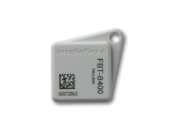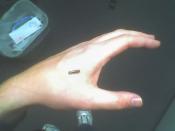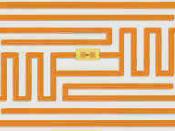RFID's is a non-contact (Wireless) use of radio-frequency from transferring data, for an automated identifying and tracking. These tags may require no battery and can be read at short ranges via magnetic fields. Others use a local power source and emit radio waves. A tag contains electronically stored information which may be read from a distance. Different than a bar code that needs to be in sight.
RFID can be used in
1. RFID tag attached to a car during production to track its process through the assembly line.
2. Medicines can be tracked at warehouses.
3. Livestock
4. RFID tags can be attached to clothing, possessions and implanted within people
5. Tracking of goods
6. Tracking of persons and animals
7. Toll collection and contactless payment
8. Machine readable travel documents
9. Tracking authenticity
10. Airport baggage tracking
How RFIDS improve efficiency in an operation environment
RFID offers advantages over manual systems or use of bar codes.
The tag can be read even if it is not visible. Tags can be read inside any container unlike barcodes.
The main point where RFID will benefit is the supply chain sector. This technology can improve the effect and visibility; it can cut administrative costs, enhance utilization of the product, and reduce shrinkage, counterfeiting and increase sales but avoiding out of stocks
Benefit towards the operation of the business
Tracking of Products
Businesses can track products at all times. They can also keep an eye on what's is and inst in stock
Enhanced Productivity & Cost Avoidance
Identifying items by RFID takes less time than using barcode or other less automated ways. This leads to greater process efficiencies in many tasks such as shipping and receiving
Reduce Manually Entry Errors: Since all inventories would be done in an automated fashion.


